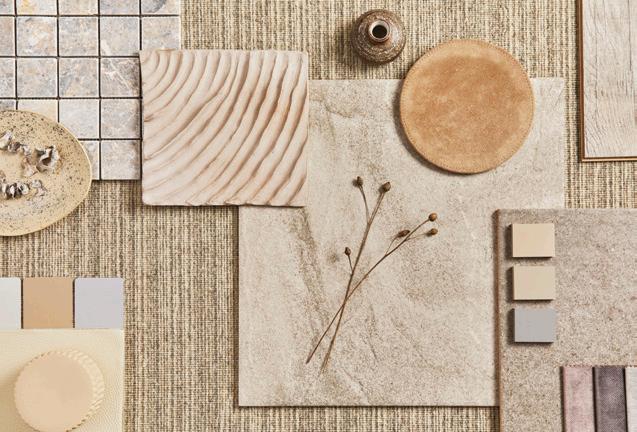
3 minute read
Artist: Lesley Redgate
A love for the landscape Story by Petra de Mooy.

Advertisement
Page left: Wheatbin Salute. Above: Twilight on Justs Farm.
We arrive at Lesley Redgate’s home studio in Willunga on a crisp autumn morning. I always enjoy the sense of discovery when visiting a new property, and Lesley’s State Heritage-listed, two-storey miner’s cottage is a real treat.
Over the thirty-five plus years that Lesley has lived there, she’s carefully restored the home and created a beautiful garden that she now tends with her partner Rob. The garden is resplendent with fruit trees, native plants and hardy cottage-garden plants growing side-byside, winding around and down to her purpose-built, rammed-earth studio at the back of the property.
Inside, the studio is unmistakably an artist’s domain. The space is full of Lesley’s original artworks, found objects, ephemera, brushes, and a work-in-progress. With a small kitchen, large work table and potbelly stove, it’s a comforting and inspiring space for Lesley to paint and teach in. Born in London, Lesley moved to South Australia in the late 1960s and later began her painting career at the South Australian School of Art. After graduating in 1976, she developed relationships with some formidable South Australian painters. ‘I was very fortunate to have painted plein air with Geoff Wilson, David Dridan and Dave Dallwitz and I learned a lot,’ she says, grateful both for their shared friendship and the time spent in common purpose. Lesley also cites early Australian artists like Dorrit Black, Grace Crowley and Grace Cossington Smith as influences. ‘When I visit the art gallery I always go to the room that houses their paintings,’ she says.
In the late 1970s and early 80s, Lesley began participating in both group and solo exhibitions. An early career acquisition into the collection of the National Gallery of Victoria was a highlight for the young artist. While holding down a job teaching art in public schools and later at TAFE, Lesley managed to raise her children while continuing her art practice participating in numerous exhibitions.




Top left: Hillside, Kay Bros. Top right: Rogers Road Barns. Above left: Artist Lesley Redgate at work in her studio. Above right: Half Light Second Valley.
work in education,’ Lesley explains. She continues to enjoy the social connection and gratification of teaching via a small group of adults she instructs weekly in her studio which is ‘perfect’. She’s never looked back.
Lesley’s landscapes are still and peaceful – depicting the evolving seasonal change. ‘It’s about both history and the present and the patterns in the landscape that change over time,’ she says. This diligent observation connects Lesley to where she lives and she finds the process relaxing. When we meet, she’s busy producing work for three upcoming exhibitions during SALA this August and September – a solo show at the Stationmaster’s Gallery in Strathalbyn and a group show at the Port Noarlunga Arts Centre. She will also have her studio open on Saturdays throughout the festival.
Though Lesley does do a bit of portraiture, landscapes are her preferred subject matter. She travels the back roads, stopping to take photos of sheds, pastoral lands dotted with sheep and cows, farming machinery, a rural vista or a beachscape. ‘I spend a lot of time planning a painting before I start,’ she says, pouring time and thought into composition, colour and design.
She revisits the same location time and time again, taking photos in different light and during different seasons. She appreciates and observes the way light plays with the colours and shapes of the landscape: a pink cloud, sweet light on the side of a shed, the golden hills of summer giving way to the greener landscapes of winter. Lesley paints the landscapes she lives in and it’s a delight to see her renderings of recognisable Fleurieu landscapes.
‘There is a connection,’ she says. ‘You see the seasons and you see the place changing over time and even when you’re driving around, suddenly the light shines on something or the fresh rain brings up the grass and you think, ‘wow, that looks good!’ and there will be a painting in that.’










